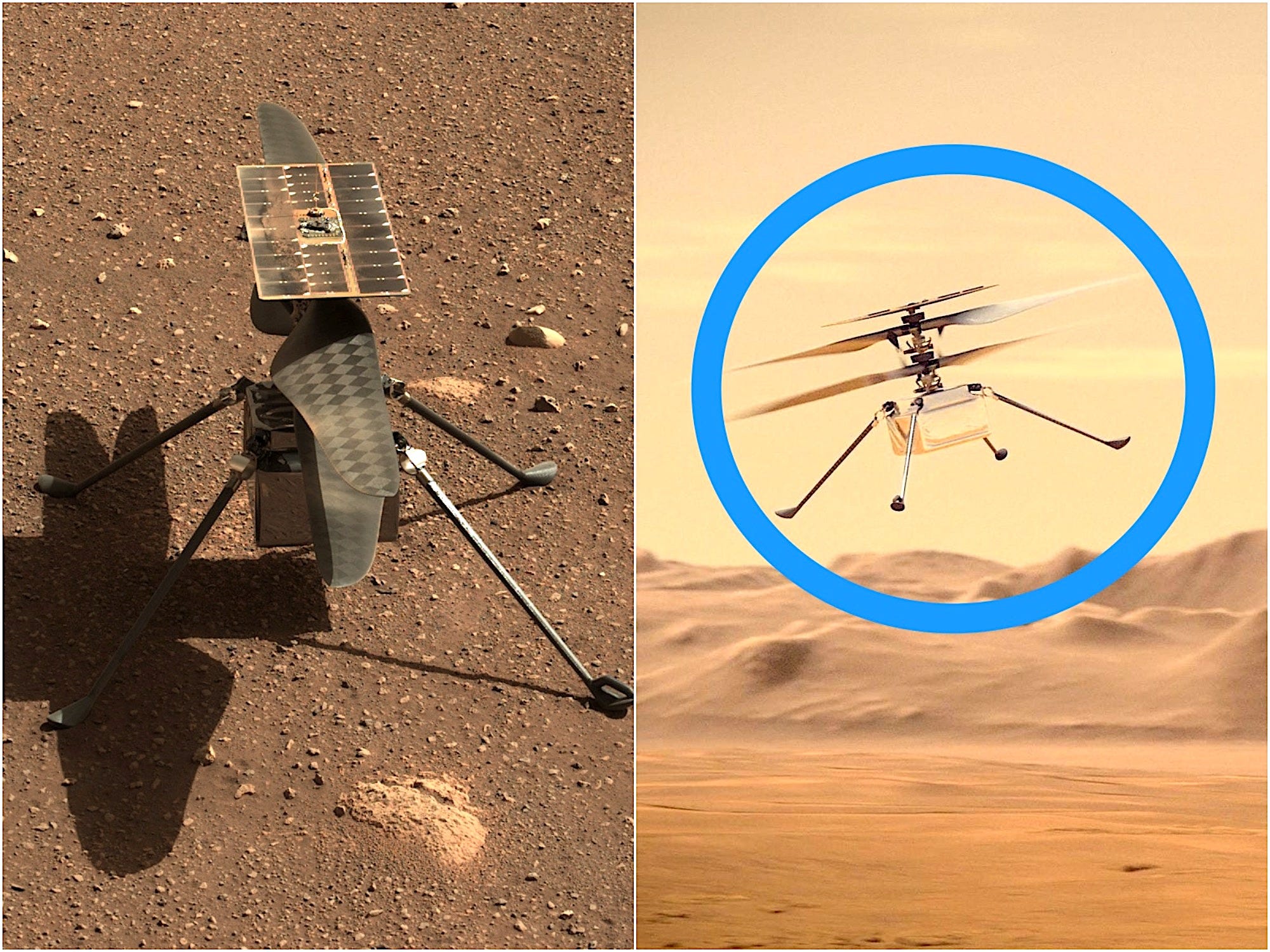
NASA/JPL-Caltech/ASU
- NASA's Ingenuity helicopter successfully executed a fourth flight over Mars on Friday.
- The excursion took the helicopter farther and faster than the prior three.
- NASA engineers have given Ingenuity a surprise second mission to scout new Martian territory.
- See more stories on Insider's business page.
NASA's Mars helicopter keeps exceeding expectations: Ingenuity completed its fourth flight on Friday, traveling farther over the Martian surface than on any of its previous journeys.
NASA engineers were prepared for the 4-pound helicopter to crash, since they're pushing it to new limits with each flight. But in this case, the tiny rotorcraft soared above rocks, sand ripples, and small craters at record speed.
NASA hasn't released details of the flight yet, but the plan called for Ingenuity to climb 16 feet in the air and reach a maximum speed of 3.5 meters per second – a feat NASA engineers weren't certain it could achieve.
The helicopter has thus far proven so successful that NASA announced on Friday it will give Ingenuity an extended mission. The original plan was to abandon the helicopter after its fifth flight. But now, NASA engineers plan to turn Ingenuity's photos into a 3D map of the uncharted terrain it covered on Friday. From that data, they'll pick a new airfield where the drone will try to land during its fifth flight, in about a week.
Once in that new airfield, Ingenuity is set to spend 30 more days testing out operations that NASA might want to conduct with future space helicopters. That includes scouting and mapping, observing interesting features of Mars from the air, and exploring rough terrain that rovers can't access.
"The ability to fly the helicopter out into terrain that the rover cannot possibly traverse and bring back scientific data - this is extremely important for future missions that could combine a rover with a reconnaissance helicopter," Perseverance scientist Ken Farley said in a briefing on Friday.
Ingenuity's 4th flight
The first attempt at Friday's aerial adventure didn't succeed. The flight was originally scheduled for Thursday, but a non-damaging software glitch prevented the helicopter from lifting off. NASA engineers expect that outcome in 15% of flight attempts.
If Ingenuity's Friday flight went as planned, it should have lifted off at 10:46 a.m. ET and flown for 117 seconds. Ingenuity was programmed to traveled south for around 436 feet, snapping photos of the Martian surface along the way. At that point, it was expected to hover and take images with its color camera, then turn around and land in its original spot.
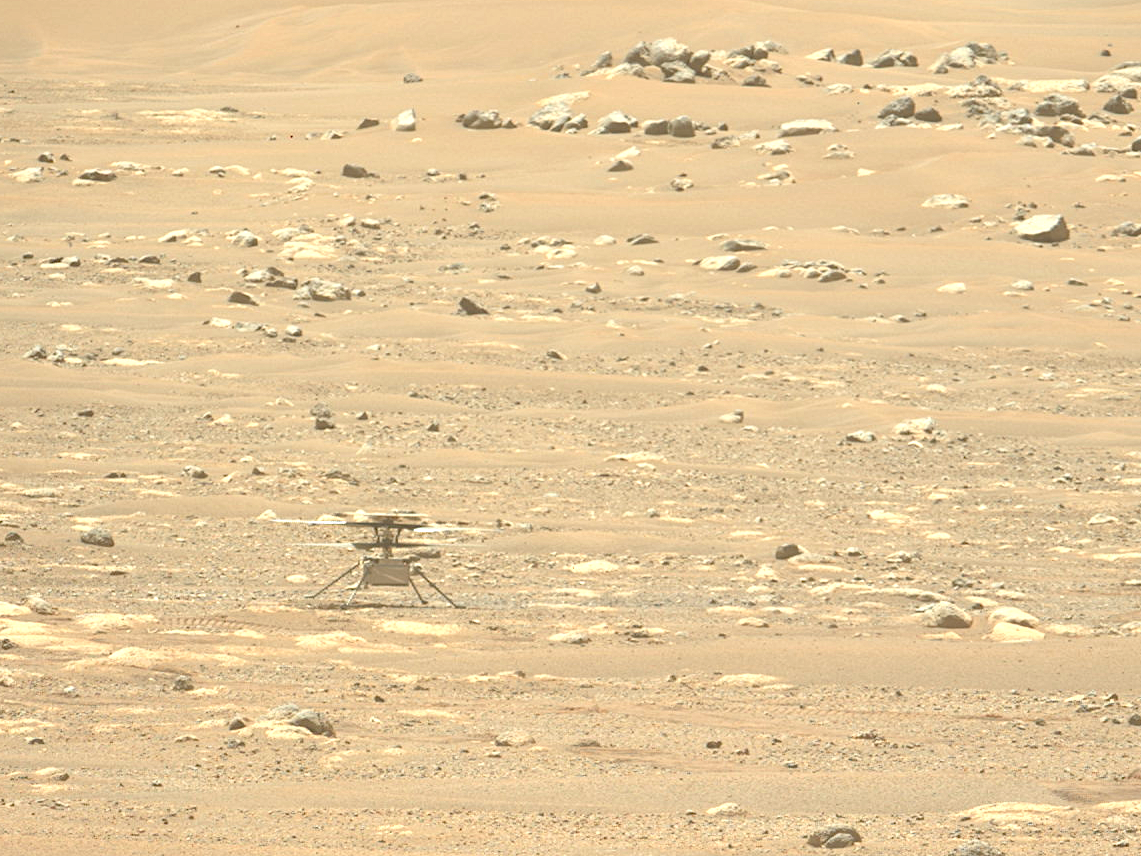
NASA/JPL-Caltech/ASU
In Ingenuity's first flight on April 19, the helicopter made history by rising 10 feet above Mars' surface. Never before had a spacecraft conducted a controlled, powered flight on another planet. Then on April 22, Ingenuity reached an altitude of 16 feet and moved sideways for the first time.
On Sunday, the helicopter traveled 50 meters (164 feet) - nearly half the length of a football field. It also moved faster than before, increasing its airspeed to 2 meters per second, or around 4.5 miles per hour. Until that flight, Ingenuity had never flown so quickly, even during testing on Earth.
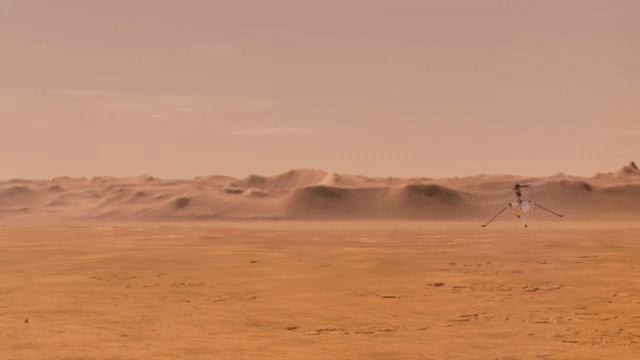
NASA/JPL-Caltech
Friday's flight was the helicopter's most daring yet, but things are about to get even riskier.
Ingenuity and Perseverance are starting new mission phases
Once Ingenuity reaches its new airfield, the Perseverance rover - which carried the helicopter to Mars - is set to move on to its main mission on the red planet: hunting for fossils of ancient alien microbes. It aims to take dozens of rock samples and store them for a future spacecraft to retrieve and bring back to Earth. Those would be the first samples humanity has ever brought home from Mars.
Ingenuity's next flights, meanwhile, will gather data on new terrain that's too dangerous for the rover.
"In doing these operational scenarios, we will naturally be pushing the limits of Ingenuity," MiMi Aung, project manager for Ingenuity, said in the Friday briefing. "We hope we will be flying over unsurveyed terrains and, over time, continuing to transfer to airfields that are not well characterized. So there is a higher probability of bad landing."
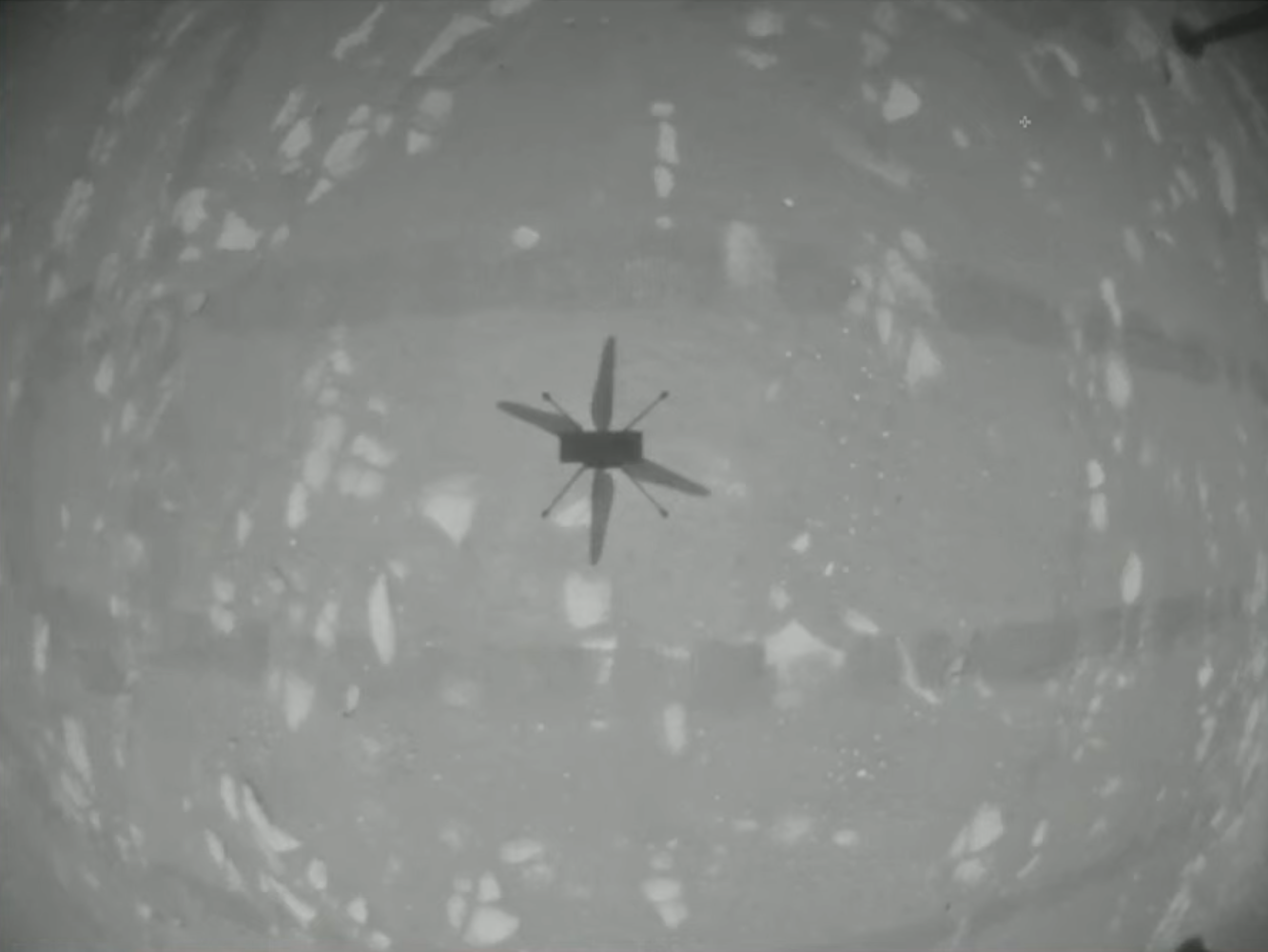
NASA
Aung has previously said that a bad landing would end Ingenuity's flights.
Flying on Mars isn't easy
For Ingenuity to fly at all, several factors have to go just right. The helicopter flies autonomously, using its cameras to track surface features on Mars in order to navigate. So there can't be too much dust on its camera lenses, since that could interfere with the navigation.
Speeding up challenges the chopper's mechanics and navigation system as well.
"We navigate by taking images of the ground below," Håvard Grip, Ingenuity's chief pilot, said in a recent briefing. "And as we're traveling faster over the ground, the features in those images disappear from you faster."
During test flights, NASA engineers were able to prevent crashes by pressing an emergency land button. But on Mars, they can't exert that kind of control.
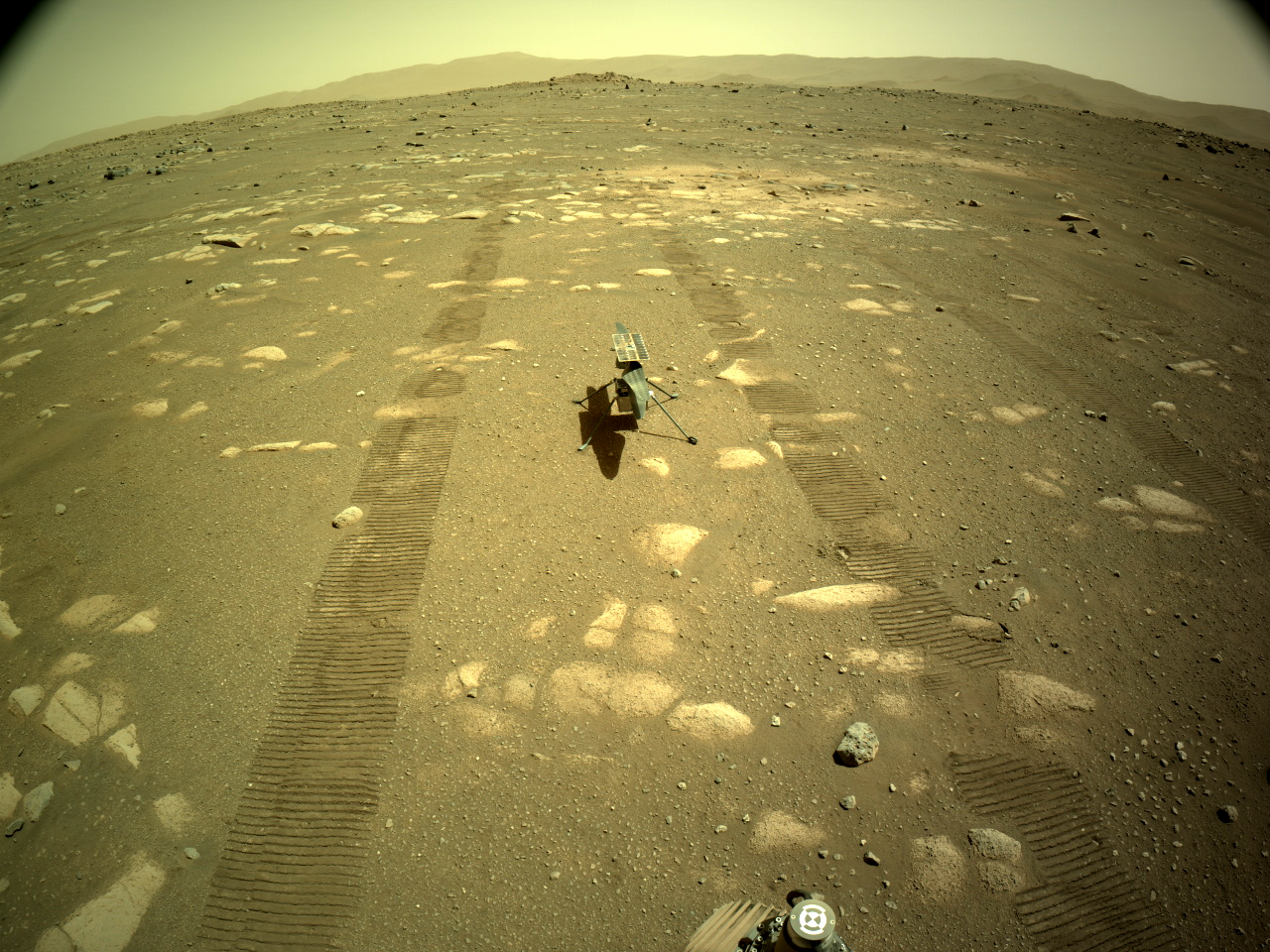
NASA/JPL-Caltech
Whatever happens after this, NASA engineers already consider Ingenuity's mission a success.
"If Ingenuity would have crashed after the first flight, we still would have met a couple huge milestones including surviving launch, charging while en route, and surviving the entry, descent, and landing," Shannah Withrow-Maser, Ingenuity's vehicle systems lead, recently wrote on Reddit.
"Deploying from the rover and surviving the cold Martian night are no small tasks," she added. "If the flight wouldn't have been successful, we would have a lot of data and lessons learned. Think of everything else as bonus!"